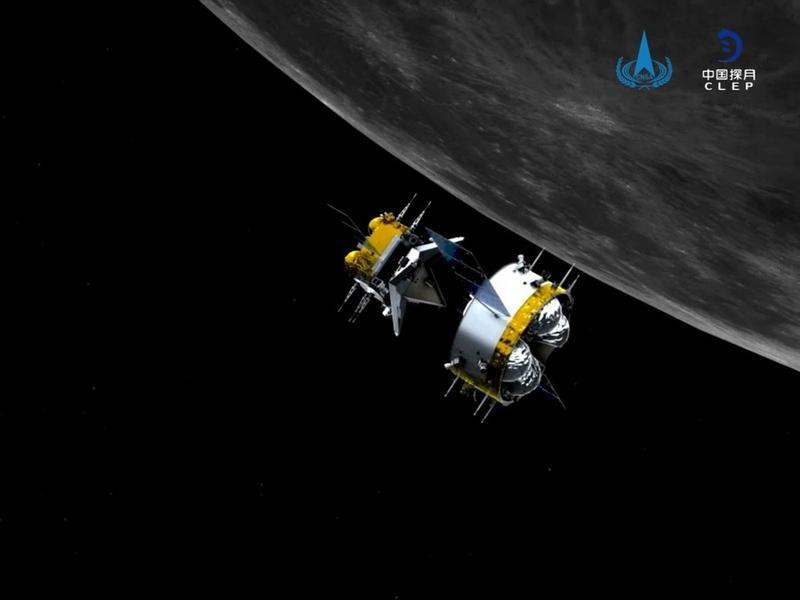 A graphic simulation shows the orbiter and returner combination of China's Chang'e 5 probe after its separation from the ascender. (Photo / China National Space Administration / Handout via Xinhua)
A graphic simulation shows the orbiter and returner combination of China's Chang'e 5 probe after its separation from the ascender. (Photo / China National Space Administration / Handout via Xinhua)
China has made an ambitious road map for its future lunar exploration programs, including an international scientific outpost, according to the programs' chief planner.
Wu Weiren, an academician of the Chinese Academy of Engineering, said that the next step in the country's lunar adventure — the Chang'e 6 robotic mission — has been set to land on the moon's far side and will collect and bring samples back.
"If Chang'e 6 succeeds, it will become the first time for man to get samples from the far side," he said in a recent meeting with domestic media in Beijing.
After Chang'e 6, the Chang'e 7 robotic probe will be sent to land on the moon's south pole to search for water and other resources.
"The Chang'e 7 mission is set to look for traces of water on the south pole, investigate the environment and weather there, and survey its landform.
"The probe will carry a 'flyby craft' tasked with flying into pits on the lunar surface to look for ice," said Wu, the academician of the Chinese Academy of Engineering.
"It will also be tasked with detecting the natural resources beneath the south pole's surface. Moreover, mission planners are considering whether we can use the probe to dig into the surface to check the underground structures and composition."
According to Wu, Chang'e 8 is set to land near Chang'e 7 on the south pole of the moon, and after that, the two missions' components — orbiters, landers, rovers and detectors — will work together to form a prototype of a robotic scientific outpost.
In the long run, the outpost will be a platform for international collaboration on lunar exploration, Wu said.
"We welcome foreign nations to join this project, and we can work together to design, build and manage this facility and share its data and findings," he said.
Pang Zhihao, a retired researcher at the China Academy of Space Technology and a renowned writer on space science, explained the reasons for choosing the moon's south pole as the outpost's site.
"Previous missions have found traces of water ice on the lunar poles. The next (Chang'e) missions can further investigate the existence of water, which can be used to support manned scientific expeditions to those regions in the future," he said. "The south pole is also characterized by its long period of sunlight, which can sustain extended operations."
China opened its lunar program in 2004 and has launched five robotic probes since 2007. The fourth one, Chang'e 4, landed on the far side of the moon in January 2019, becoming the first spacecraft to closely observe the little-known lunar region. The mission's core component — the Yutu 2 rover — has worked on the moon for nearly four years and has traveled more than 1,300 meters on lunar soil, making it the longest-working rover of all time.
The most recent mission, Chang'e 5, landed on the moon in December 2020 and soon brought 1,731 grams of lunar rocks and soil back to Earth, achieving a historic accomplishment about 44 years after the last lunar samples were brought back by the Soviet Union's "Luna 24" mission in 1976.


